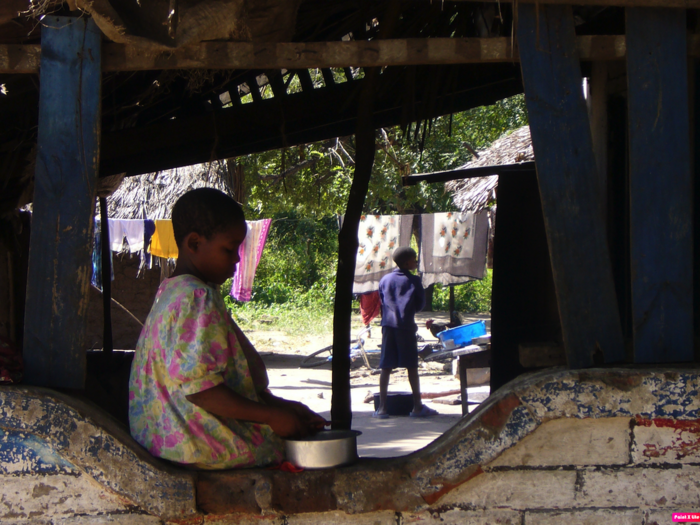Food insecurity is a growing problem in certain parts of the world, especially as climate change affects weather conditions around the globe. New research led by Penn State found that a lack of rainfall was associated with the highest risk of food insecurity in Tanzania.

Credit: Heather Randell/Penn State
Food insecurity is a growing problem in certain parts of the world, especially as climate change affects weather conditions around the globe. New research led by Penn State found that a lack of rainfall was associated with the highest risk of food insecurity in Tanzania.
Specifically, the researchers found that moving from a year with typical rainfall to a particularly dry year was associated with a 13-percentage-point increase in the risk of being food insecure for Tanzanian households, likely due to the effect of less rain on maize production.
Heather Randell, assistant professor of rural sociology and demography in the College of Agricultural Sciences, said the findings could have important policy implications focused on helping agricultural households become more resilient against drought conditions.
“Climate change will continue to change precipitation patterns, so it’s vital to find ways to help at-risk communities fend off food insecurity,” Randell said. “Potential interventions could include providing drought-tolerant maize, increasing access to agricultural extension services, scaling up agricultural index insurance, improving uptake of soil and water conservation practices, and providing cash transfers based on drought early warning systems.”
Randell said the findings — recently published in the journal Food Policy — also could apply to other low- and middle-income countries, especially those heavily dependent on maize production.
According to the researchers, food insecurity — the inability to acquire sufficient, nutritious, safe and affordable food — affected about 2 billion people, or 26% of the global population, in 2019. This is particularly true in sub-Saharan Africa, where the prevalence of moderate or severe food insecurity grew from 50% in 2014 to 57% in 2019.
Previous research has found that food insecurity can affect both physical and mental health, which in turn can have implications for household labor productivity, child growth and development, and poverty reduction.
But while the Intergovernmental Panel on Climate Change predicts that climate change will increasingly threaten food security and nutrition — particularly in poorer parts of the world that rely on agricultural production — the researchers said there has been very little research examining the effects of rainfall and temperature on how and whether households experience food insecurity.
“Most prior studies have focused on other related outcomes, like child nutritional status or food expenditures,” Randell said. “But these do not offer a comprehensive picture on how climatic conditions affect the quality, quantity and variety of food that households are able to access.”
For the current study, the research team wanted to explore how various weather conditions were related to food security in Tanzania, a country with a high prevalence of food insecurity that is also highly dependent on rain to grow its maize crops.
The researchers linked longitudinal, nationally representative household survey data from more than 3,200 households across Tanzania to high-resolution data on rainfall and temperature during the most recent growing season.
The survey data — collected by the Tanzania National Bureau of Statistics with assistance from the World Bank Living Standards Measurement Study–Integrated Survey on Agriculture — included information about the quantity and quality of foods consumed in the household and how households respond to food shortages. This data then was used to determine whether a household was food insecure or not.
“The relationship between low rainfall and food insecurity is likely driven in large part by the effects of weather on maize production,” Randell said. “Maize thrives in warm conditions with ample rainfall, as the crop is sensitive to droughts and to both frost damage and extreme heat.”
Additionally, the researchers found that households with fewer working-age members were most at risk of food insecurity after experiencing low rainfall. Randell said this likely is because during drought conditions, households with only one or two working-age members have fewer opportunities to earn additional income compared to those with three or more working-age members.
The researchers said the findings will continue to be important as weather conditions change within the country. Climate projections for Tanzania predict warmer temperatures overall but more varied rainfall across the country, with more yearly rainfall predicted in the northern and northeastern parts of the country but less rainfall predicted in the south.
Clark Gray, University of North Carolina, and Elizabeth H. Shayo, National Institute for Medical Research, also participated in this work.
The Eunice Kennedy Shriver National Institute of Child Health and Human Development helped support this research.
Journal
Food Policy
DOI
10.1016/j.foodpol.2022.102362
Article Title
Climatic conditions and household food security: Evidence from Tanzania
Article Publication Date
4-Oct-2022




